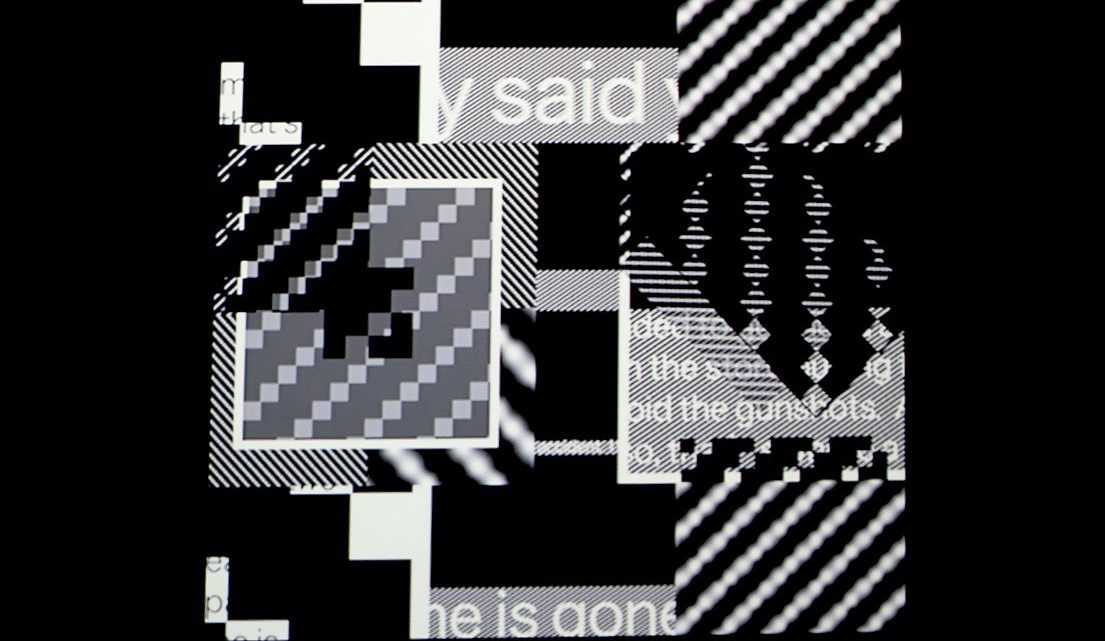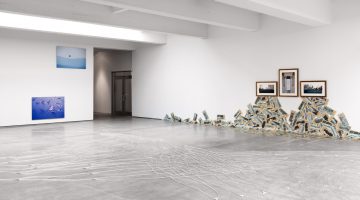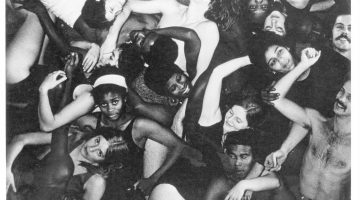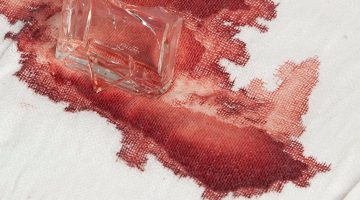I became familiar with Indira Allegra’s work through an interwoven map of relationships: through good friends who are like family, through raffles at powwows, and on the threads of conversation that connected and reconnected me to her varied and dynamic visual works. When my collaborators and I, as Black Salt Collective, were in the earliest stages of planning our first large-scale curatorial project, Visions into Infinite Archives, we began by just chatting about the artists close by in our lives and on the periphery, a meandering process that mapped these expanding webs of relationships. It was beautiful, actually—a reminder of so many sparks of connection that anchor and support, inspire, and incite us as artists, as healers, as future ancestors.
Allegra was one of the first artists that came to my mind to be included in the exhibition. Her embodied and visual weavings feel inextricably tied to her work as a wordsmith, as a storyteller and truth-sayer; some even incorporate these writings into the literal warp and weft of the textiles. These deep relationships between mediums make her visual work so conceptually rich; the interdependence of text and textile provides generative ground upon which to challenge the limitations of both. One example of many is Blackout, a digital weaving installation which documents ongoing and escalating police violence by creating spatial environments of the testimony from family members of those slain by police and serge twill—the fabric commonly used to make police uniforms—calling grief, silence and embodied legacies of violence to the forefront. The powerful collaboration of narrative elements in her practice create conversations in and between opposing worlds.
I reached out to her to follow threads of conversation in a shared document through the Internet ether, just before the opening reception of Take This Hammer: Art and Media Activism at Yerba Buena Center for the Arts, where Blackout will be installed through August 14th, 2016.
At so many Native community events, conversations begin with questions like “What tribe are you from?” and “Who are your parents?”, “Where did you grow up?”, and “Do you know so-and-so?” These contexts of knowing each other are so foundational to basic conversations; this mapping of relationships is part of everyday work. In this spirit, can you share some of these relationships? Who are your people? Where are you from?
Yes of course. I was born in Detroit, Michigan and grew up in Portland, Oregon before moving to Oakland, California in my mid-20s. My mother’s people are from towns scattered throughout Georgia and Biloxi, Mississippi. They are Black— descendants of mixed tribal origin from peoples along the west coast of Africa who were forced into chattel slavery on Cherokee, Chicasaw, Choctaw, Creek, Seminole, and Natchez land. They survived by sharecropping, doing domestic work, and working cures when they needed from the land. My father’s people are descendant from Cherokees living in Athens, Georgia and Bessemer City, North Carolina (two hours outside of Cherokee, NC)—they survived by mixing with non-Indians and learning how to assimilate into a growing, dominant white culture. My father’s people also come from African descendant foremothers raped by Irishmen while working on plantations and caring for white children in white homes. I am ascendant from all this and as such influenced by Rabbit Trickster tales, jazz aesthetics, the sense of animacy in all things, the importance of literacy, blues, decorum, and cornbread.
Who are some of your teachers, mentors, and influences? How does this shape or ground your practice?
As for teachers, I have to appreciate Dario Robleto for his work on materialist poetry, Josh Faught for his wealth of knowledge of weaving and queer craft, and Oriana Bolden who introduced me to the basics of video production and editing. I need to thank Tirza Latimer for her support. A big wado to Jacquie Archambeau for her knowledge and love of Cherokee culture and people and Kim Shuck for her uncompromising Cherokee poetic. A big wado to Qwo Li-Driskill for hir fearless scholarship on Asegi people (Cherokee Queer & Two-Spirit people). A signed and silent thank you to Jeska Duckworth, an activist in the Deaf, Queer community in Portland for teaching me American Sign Language, and Mark Azure (Chippewa-Cree/ Dakota and Tsimshian), an elder in the Deaf Native community in Oregon, for supporting me to become the first person of color ever to graduate from my Sign Language interpreting program back in 2005. I would be remiss if I did not also thank Catherine Dubois (Métis) for her overall wisdom and kindness and for teaching me to be of better service to Deaf/Blind people—and thus all people.
Thank you for being so generous with this response! The naming of relationships, of place, of shared knowledge, of guiding spirit is so moving to me; it provides a span of influence, lineage and, as you so beautifully direct us to, ascendancy that extends through time.
The temporal nature of your work, from material to medium to narrative, is really powerful to me. Can you talk a bit about how time influences what you refer to as the performance of your work?
I am not convinced that time is entirely linear. When one experiences the grief of displacement (from your land/home/body/ relationship), you don’t ever “get over it.” There is no getting over it—no redemptive narrative to achieve, only a changing distance from the initial pain of loss from your life. I believe that while we may feel as though we are moving forward, we may actually be spiraling outward orbiting points of grief in our lives from a different perspective. I experience art making in this way wherein my body passes through a point of contact with a material or passes through a point of inquiry repetitively until I begin to notice my changing distance (emotionally, ideologically, physically) from the work.
Wow. That’s a moving way of relating to your process. That ethereal motion and shifting intention is definitely palpable in the work of yours I’ve had the privilege of encountering.
While sitting with the pieces you’d installed during Visions into Infinite Archives, I found your work to create a defined yet open space, each weaving speaking to the others like an old friend and inviting you to listen in. But it also was disorienting, with portals to lose yourself through and constellations tracing displacement, migration, home, all of these cartographies of shifting relationships, spatial rupture, and reunion—the textiles in conversation created a place between the present moment and a thousand moments before and after. It felt atmospheric.
Thank you for sharing that. Sometimes, I have this feeling of being pushed and pulled through space with some of my works and I imagine it is a way for me to understand what is threadlike about myself—shifting back and forth over the breast beam of the loom.
Building on what you articulate as that shifting movement, why do you acknowledge the act of weaving as a performance? How does this interact with the other kinds of performance you do?
Performance implies the presence of a witness (even if the only witness is the performer themselves through the lens of a camera). In acknowledging the act of weaving as a performance, I acknowledge the animacy of the cloth that is witness to its weaving and the body of the loom that holds the tension of my exertion. This acknowledgement creates space for the labor of weaving to be elevated as an art itself apart from the typical focus on the object created. Performance art has a long history of investment in art which resists commodification, and it cannot be easily purchased due to its ephemeral nature. Performance art also eschews linear narratives which makes it a useful technology—like poetry—to explore experiences that never fully seem to leave us, but rather shape us though time.

Documenting Disability, 2013. Three channel installation. 2 minutes 28 seconds. Courtesy of the artist.
What is the importance of text in your work? How do your practices as a visual artist and as a writer influence each other? Is this a significant collaboration in your process?
The word text is rooted in the Latin verb texere, which means “to weave.” I am a writer and performance artist thinking through craft, generating texts that exist as material documents and time-based works. Documents legitimize our bodies in face of religious, legal, medical and educational institutions. It is through the intermediary of the document that we stake a claim for authorities to accept or deny us, to sanction our bodies or our claim to our homes, or leave us vulnerable—unsanctioned for the privileges of citizenship, or rights to accommodation, aid or physical sovereignty. I worry about the sole reliance on the production and performance of alphanumeric text when responding to documents when filling them out. I have to ask if an overreliance on alphanumeric text limits what aspects of human experience can be considered in a document and if so, what other kinds of literacy are required to understand more about the unique vulnerabilities each of us have to offer. As someone who has training as a Sign Language interpreter, it makes sense to me to look to the body for alternate modes of text production, to build meaning through repetitive gestures—a process not unlike textile production.
We chatted briefly about your upcoming residency in Berlin this summer. I was floored by your idea to use this performative medium to literally test the tensile strength of a document, the Universal Declaration of Human Rights, adopted by the General Assembly of the UN, to speak to the dire unliveability of the United States as a Black and Native woman. How did you come to this intersection of art and policy?
I am drawn to Berlin as it has become a laboratory for the impact of an “open door” policy on refugee crisis. I believe that the issue of refugee crisis will be an ongoing one with the presence of Syrian refugees raising complex questions about the role of neighboring nations to provide asylum, to the prospect of climate refugees losing their countries to the rising waters of global warming or global debt. We must all imagine what it could be like to need refugee status.
Thinking broadly, I’m curious about the future of who will qualify for asylum and how this need for asylum could be adequately measured. Might the written word be insufficient to articulate experiences of trauma in an application for refugee status? How else might a case for refugee status be recorded? As an artist, I seek to question the limits of Germany’s open door policy and explore how this could be further stretched conceptually to include an open door to unconventional forms of documentation in asylum cases and unconventional ways of perceiving who needs asylum.
Can you talk more about how you will to engage this work and the document it reimagines? What are its implications?
If a working-class, Queer, Black and Native Femme needed asylum, what documents, or international bodies would be strong enough to act on her behalf? What would she be asked to prove in her application and what resources could she use to stake her claim?
The work I will be developing on residency is Asylum Application, a deconstructed asylum application created for exhibition. This site-specific work will consider my past experiences and future fear of being persecuted in the United States on account of “race, religion, nationality, or political opinion; or because of membership in a persecuted social category of persons in America”—this is wording taken directly from the UN Convention of Human Rights describing experiences that would qualify an individual for refugee status.
The institutional, economic, psychological and physical harm that black and Native people have experienced in this country (and in many other places) does not require another word of proof. I need not waste a moment trying to prove certain aspects of my everyday life and the lives of my ancestors. What I can do is explore the representation of those realities on my own terms in an attempt to co-opt the power of formal documents—to respond to them in such a way that seeks to exceed them in an attempt to interrupt rote narratives of acceptance or denial that these forms are often used to determine. I want to see if textile interventions on form documents can allow for that paper to do something beyond the binary of “approve or deny” thus imagining unanticipated outcomes.
During the residency, I will answer German asylum document questions using multiple forms of text production that include textile making processes with the knowledge that textile is a form of text. As such, completed asylum documents will produce written texts and textile interventions that include woven and beaded pages, folded and quilted documents. The latter are strategies that Black and Native people have used to tell stories for a long time, and I want to see how these textile interventions function when interwoven with international laws and policies.
Asylum Application will contend with the legibility of harm to a queer Black and Native body, questions about the nature of safety and the methods by which harm can be represented without being forced to rely on alphanumeric performance as the sole avenue by which a claim for help can be made.
Are there any other new or emerging works you are excited to share? Future collaborations?
Look for threadless weavings. What continues to emerge in my work is the understanding of weaving as a methodology—a strategy for creating relationships between seemingly disparate lines of thought or orientations to space. A praxis texere need not be confined to the loom or the desire for new objects. It is about the decisions an artist can make when she knows how to work under tension—at times writing for texture, or crossing gestures together at an angle as a form of speech. I welcome collaborations that, as you say, test the tensile strength of existing documents and posit multiple pathways by which official documentation—medical, academic, legal, or financial—can occur. Our trauma, desire, and doubt as human beings frequently exceed what we can express alphanumerically; we often rely on poetics to fill the gap. In short, look for attempts at (im)material poetics.
I welcome transnational collaborations and collaborations with those working in new media—the Jacquard loom is, after all, the ancestor to the computer as we know it today. I’ll be working on a project soon to celebrate the 20th anniversary of Watermelon Woman directed by Cheryl Dunye. What I can say about it now is that I plan to explore relationships between simulations, avatars, and queerness within the frame of the film. Beyond this, I have two manuscripts that are in need of some re-imagining at a future residency. Oh, and if the Black Salt Collective asked me out on a creative collab, I’d say yes.



